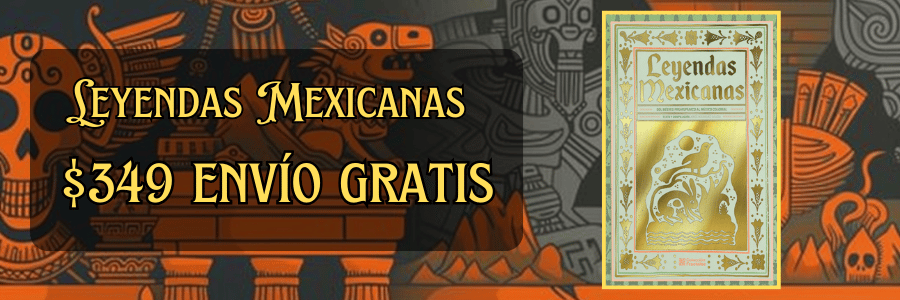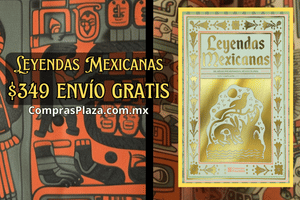The Story Behind Mexico’s Iconic El Zócalo
El Zócalo, officially known as Plaza Mayor, is not merely the heart of Mexico City but a vibrant reflection of the country’s rich history, multifaceted culture, and ongoing social evolution. Nestled within the bustling metropolis, it beckons millions of visitors and locals alike, who come to experience its dynamic atmosphere, attend major cultural events, and engage with the historical narratives woven into its very fabric. Despite its contemporary significance, El Zócalo’s origins date back to the time of the Aztecs, a civilization that thrived over five centuries ago, establishing a connection that runs deep through Mexico’s historical timeline.
In the early 14th century, the area now known as El Zócalo was the main ceremonial precinct of Tenochtitlan, the formidable Aztec capital. At the heart of this ancient city was Templo Mayor, an imposing pyramid dedicated to two vital deities: Huitzilopochtli, the god of war, and Tlaloc, the god of rain. This temple was not just an architectural marvel but also a vital center for religious rituals, including human sacrifices, which were integral to Aztec cosmology and societal order. The remnants of Templo Mayor, excavated in the 20th century, now stand as testament to Tenochtitlan’s grandeur and hold immense archaeological and cultural significance.
After the Spanish conquest led by Hernán Cortés in 1521, the course of history for the area shifted dramatically. The new Spanish authorities initiated extensive renovations across the city, building a new colonial metropolis atop Tenochtitlan’s ruins. The site of the former Templo Mayor was largely transformed, making way for the Spanish Cathedral, known as the Metropolitan Cathedral, and the surrounding institutions that defined the colonial experience. The altar at which the original Aztec high priests had once made sacrifices now set the stage for Catholic rites and ceremonies. This transposition of religious and cultural practices symbolized the larger historical tensions between indigenous traditions and Spanish colonial imposition.
By the 19th century, El Zócalo had evolved from merely a ceremonial space to a melting pot of political, social, and cultural events. As the newly independent nation began to shape its identity following the War of Independence (1810-1821), El Zócalo became a symbolic stage where social dynamics played out against the backdrop of internal strife and celebration. The power conflicts that marked the early years of independence contributed to the reconfiguration of public spaces, with El Zócalo at the center. Here, citizens gathered to voice their grievances, rally for revolutionary causes, and commemorate victories, illustrating the plaza's role as an open forum for public discourse.
The 20th century marked a pivotal transformation for El Zócalo. A foundational moment occurred in 1968 when student protests escalated into a significant uprising regarding civil rights, democratic governance, and national identity. The so-called Tlatelolco massacre saw government forces open fire on a peaceful demonstration, forever etching this tragic event into the national consciousness. Henceforth, El Zócalo became a living monument to activism and social justice in Mexico, a gathering point for movements advocating for democracy, labor rights, and indigenous sovereignty.
As the 1980s approached, El Zócalo took on new dimensions of cultural significance. The coming years saw the emergence of a burgeoning cultural festival atmosphere as street performers, art installations, and music acts began to claim their stake on the plaza. The Mexican government took steps to revitalize the area, inviting artists and musicians to adorn the square with vibrant displays of life and creativity. With each passing year, El Zócalo evolved into a stage for celebrating Mexico's diverse artistic expression, enriching the collective urban experience.
Architecturally, the Zócalo reflects a diverse past, featuring a blend of colonial, modern, and indigenous elements. One cannot overlook the stunning Metropolitan Cathedral, completed in 1813, which rises majestically along the plaza’s edge. Its baroque façade is adorned with intricate sculptures that narrate biblical tales, representing the strong ties between religion and subsequent power structures in post-conquest Mexico. Facing the cathedral is the National Palace, which houses the offices of the President and beautiful murals crafted by the famous artist Diego Rivera, showing both the grandeur and struggles of Mexican history.
Another distinguishing feature of El Zócalo is its status as a UNESCO World Heritage site, recognized for its cultural significance and preservation efforts. Plazas like El Zócalo represent essential communal spaces in Mexican urban life, often serving as sites for markets, festivals, and public gatherings. The designation as a World Heritage site draws attention to the imperative of maintaining such spaces as vital to Mexico's national identity and cultural heritage.
El Zócalo continues to adapt to contemporary society. Annual events such as Día de los Muertos (Day of the Dead) and Independence Day celebrations draw massive crowds, transforming the plaza into a sprawling, colorful homage to Mexican traditions. The space regularly hosts concerts, cultural exhibitions, and political events, reinforcing its stature as a central nucleus of civic engagement and cultural unification. Special installations have also been cultivated to address pressing issues, such as the “Mural for the Missing” project, which pays tribute to victims of violence and symbolizes the nation’s ongoing struggles with crime and justice.
Within the Zócalo’s confines, one can sense the spirit of community that transcends individual experience. Friends and families come to celebrate triumphs, mourn losses, and engage with a narrative unique to each visitor. Merchants sell traditional crafts, delicious street foods, and works of art, adding to the marketplace vibrancy characteristic of the plaza. Iconic local dishes, such as tacos, tamales, and elote, create a sensory tapestry reflective of Mexico's culinary heritage, enticing visitors with every bite.
However, El Zócalo is more than a mere backdrop to historical and cultural celebrations; it is, in many ways, a barometer of the socio-political landscape of Mexico. Social movements, protests, and public spectacles regularly unfold within its boundaries, a testament to the plaza’s space as a stage for the expression of civil liberties. Political leaders often address large crowds, seeking to harness the electrifying energy present at gatherings. The square encapsulates the pulse of a nation where the echoes of history intermingle with the immediacy of contemporary issues.
Upon engaging with El Zócalo, one cannot overlook its spiritual dimensions. The site resonates with a blend of sacred and secular history, where remnants of indigenous rituals merge with colonial religious practices. This duality is echoed in the way the people interact with the space; it is a gathering point for life celebrations such as weddings, birthdays, and religious ceremonies. Street artists, musicians, and performers enliven the atmosphere, showcasing an inclusive representation of the diverse voices that compose modern Mexican society.
The essence of El Zócalo lies in its role as a gathering place where disparate narratives converge. It embodies a complex panorama of history, culture, and identity, serving as a living witness to the struggles and triumphs that have shaped Mexico. As people navigate through this pulsating plaza, they encounter the stories of their forebears intermingling with their contemporary realities. Thus, El Zócalo remains an invaluable symbol of Mexico’s resilience, its communal spirit, and its unwavering devotion to celebrating life, culture, and the unyielding desire for justice and harmony. Whether one is gazing up at the grand cathedral or taking part in a public festival, El Zócalo is a powerful reminder of the shared human experience that connects all who walk its storied grounds. Through the lens of this iconic plaza, one can embark on a journey through a past replete with diversity and a present that continues to seek progress amidst the complexities of modern life.
Explore More:
| How the Mexican Revolution Changed the Role of the Catholic Church |
| Education and Schools in Colonial Mexico |
| Women’s Rights in Mexico: Progress and Struggles After the Revolution |
| How the French Invasion of Mexico Impacted the Mexican Monarchy |
| The Artistic Legacy of Mexico’s Colonial Period: From Paintings to Sculpture |
| The Role of Oil in the Development of Alternative Fuels |
| How Mexican Artists Are Reimagining Their Cultural Roots |
| The Artistic Expression of Mexico’s Indigenous Communities |
| The Role of the Chichimeca in the Silver Mining Boom of Zacatecas |
| The Diplomacy of the French Intervention: Letters and Treaties |



